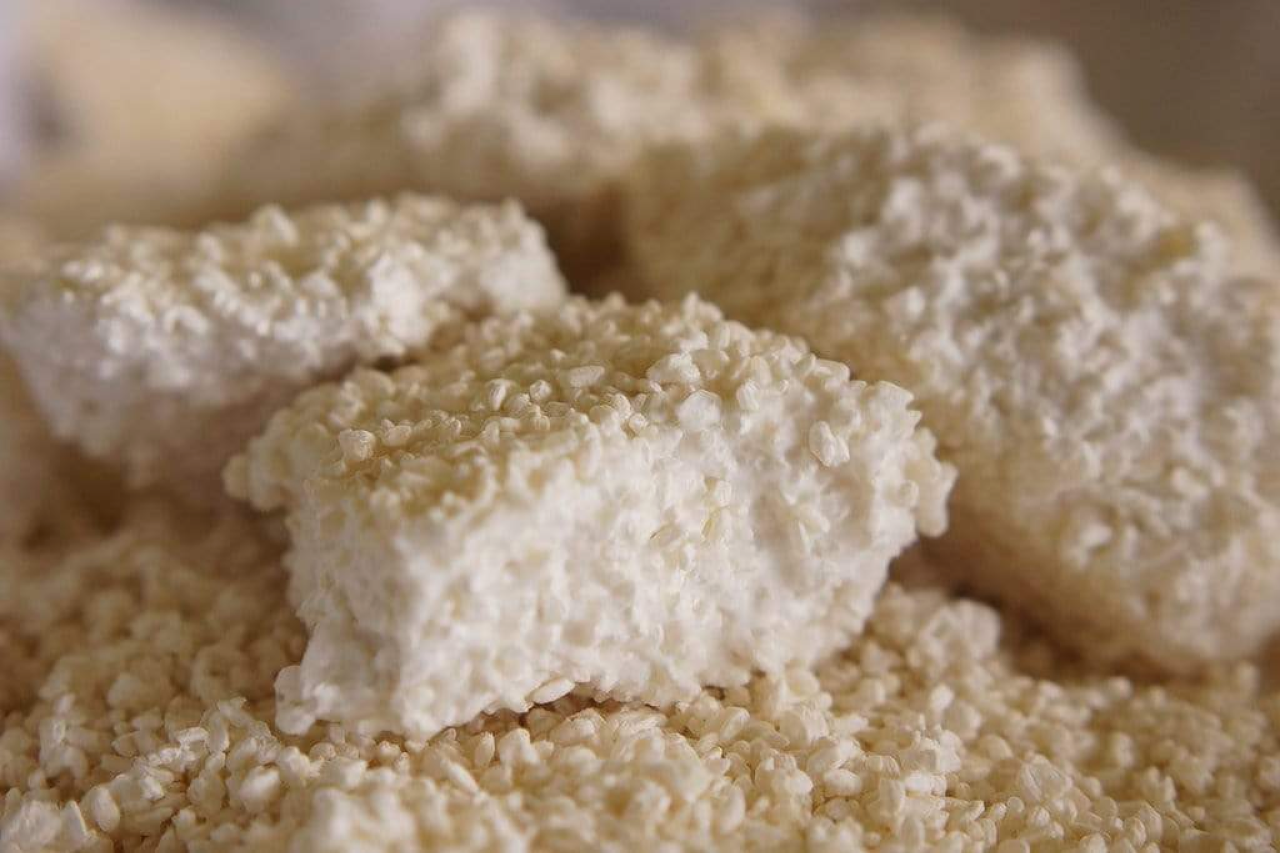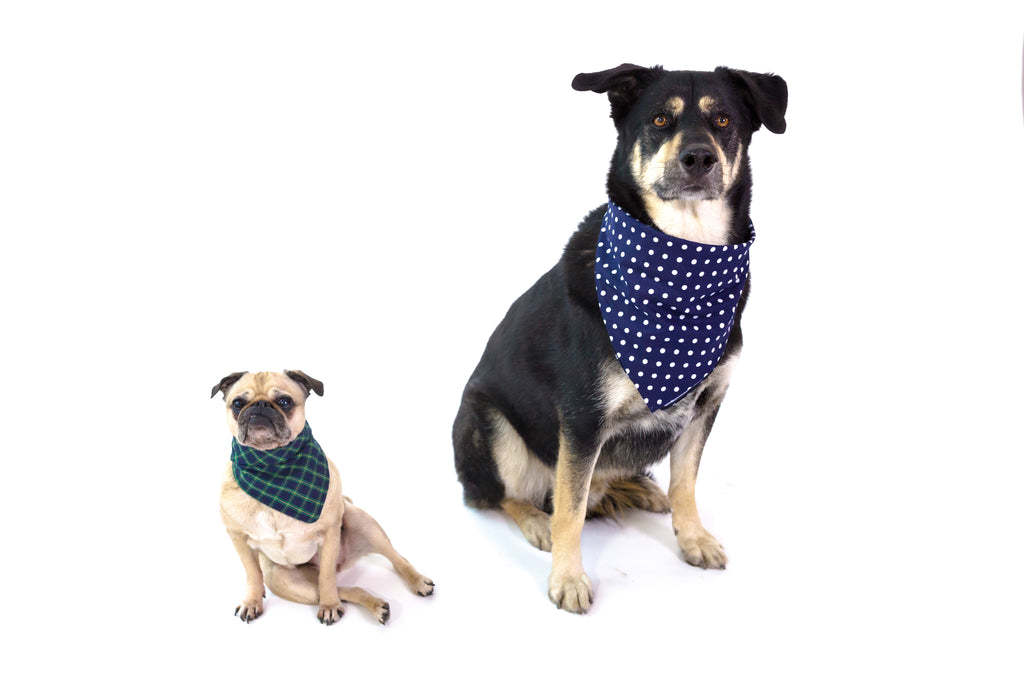
Get To Know The New Protein For Dogs - Koji
Koji isn’t new to the food world, but the team at Wild Earth is using it in a novel way.
Learn why this ancient protein was chosen for Wild Earth dog food and how it's made.
“Koji is not just a fungus,” says Ron Shigeta, PhD, Chief Science Officer at Wild Earth. His affection for aspergillus oryzae (commonly known as koji) is apparent as we start talking about how Wild Earth pet foods are made.
While koji might seem like a new kid on the block when it comes to food, Ron assures me that’s not true.
“Koji has been with us for thousands of years and we use it for so many different things. It's almost like going out to eat a bowl of Thai noodles - it's an experience brought over from another culture that we're enjoying,” he explains.
He describes eating koji as a culinary experience, one that we can happily share with our four-legged friends. But besides being a familiar fungus that’s safe to eat, why did Wild Earth choose koji as the basis for their food?
We’ll explore the answer to that question as we look at how Wild Earth pet foods are made, in five steps.
1. Sourcing Human-grade Koji
“There's a lot of koji out there that's already been used in food,” explains Ron. Koji is used in traditional foods like soy sauce, miso soup, and fermented bean paste. Ron and the team wanted to draw on this tradition for Wild Earth pet foods, so they source Koji from the same vendors who are already providing to other food makers. When purchasing koji, what you get is considered “dry koji” which releases spores. “It's much better food when you're not breathing in spores, even though they're safe. It's just not useful if you're not ingesting it,” explains Ron. This is part of the reason Wild Earth chooses to grow wet koji - no spores means none of the koji is lost to the air.
2. Isolating the right Koji strains
In each bag of koji they buy, there are nearly hundreds of millions of active individual koji strains. “We sift through those in an efficient way and find the ones that are going to produce the best dog food,” says Ron. So, each strain is separated onto plates in the food science lab and observed. They want to see what nutrients they produce, things like starch, fiber and vitamin profiles. They’ll also look at what byproducts the koji produces that might not be useful for food. Once a good strain is isolated, it moves to the production phase.
3. Lab-produced koji is consistent
One of the benefits of cellular agriculture, explains Ron, is that it produces incredible consistency of product. “If you're growing millions of acres of wheat, finding this consistency is more of a problem. We don't see that at the store, but getting the same loaf of bread year in and year out is something that baking companies work very hard to get,” he says. And the wonderful thing about cellular agriculture? You don’t need grain storage. Ron quips, “You just pop it in the freezer and keep it forever.” Because it’s grown in a lab, each koji strain selected is free of bio contaminants and remains in its pure form.
4. Koji grows fast
Another great thing about koji is that it grows really fast. Setting aside traditional scientific terms for a moment, Ron says koji is a “rambunctious little beast” when it comes to growth. In Japan, the traditional way to grow koji is to sprinkle it on a large amount of carefully polished rice. The koji will immediately start eating the rice, and as it grows it makes a white fuzzy frost over everything. While koji grows very quickly on rice, it doesn’t produce a large volume of usable material. That’s why koji at Wild Earth is grown in a special lab-made media. “On a commercial scale you want to find food grade nutrients for koji to grow on,” explains Ron. Currently the team is trying different sources, one of which is sugar, which koji seems to like. Ron compares the process to traditional farming saying, “What we have is agricultural inputs in and then koji comes out. It's like growing an animal but it only takes three days.” And, it’s much more humane and gentle on the environment.
5. Putting koji into pet food
After selecting and growing the right strains of koji, it’s removed from the growing medium and pressed - almost like cheese or tofu. It’s then given to Abril Estrada, Wild Earth’s Head of Operations who formulates the food. She’ll use it directly in its wet form, or dry and convert it into a flour. Then, she uses it like any ingredient you might use in a kitchen. “We want our lab and our whole process to be a kitchen first and a lab second,” says Ron. So far they’ve produced different sized kibbles and many flavors of treats.
What do the dogs think?
Wild Earth is making a commitment to humane testing methods. Instead of using professional lab animals, Wild Earth prototypes are tested in homes with pets and their caretakers. They take a few different varieties and see which ones different dogs are drawn to. Even the staff and supporters are getting into it.
Ron offered me a sample, but there were none left after Abril had been sharing treats with dogs at Rocket Dog Rescue. “These have dog drool all over them, but the peanut butter treats were very successful,” said Abril. I sniff-tested some blueberry treats and I’d say they smelled great.
As Ron mentions, “Koji is already in a lot of dog foods. In general, it’s added to aid the digestion. It's also already cleared to be consumed by people.” So, koji is certainly not new, but Wild Earth is approaching this ancient fungi in a novel (and tasty) way.





























